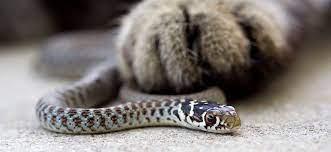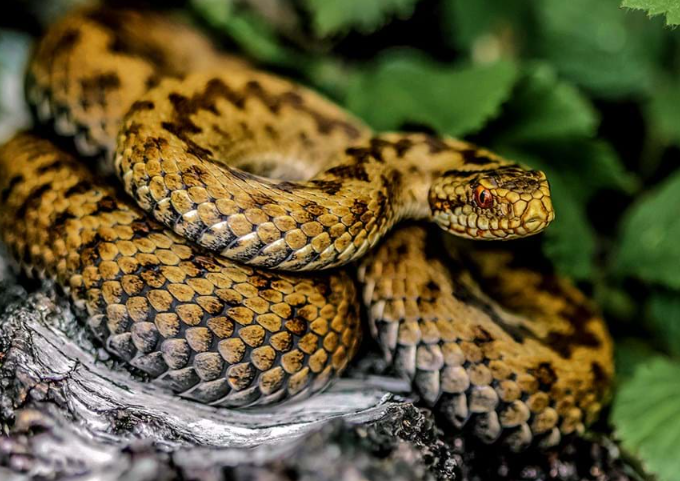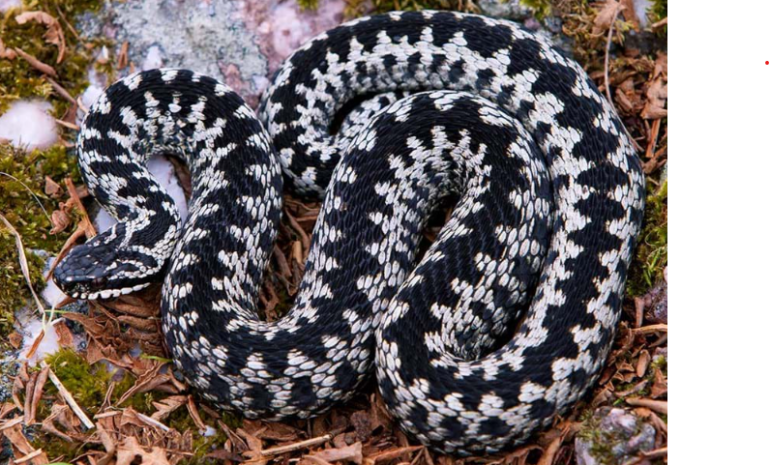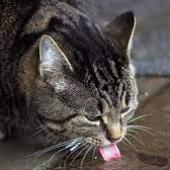Adder (snake) bites in cats Risks, Symptoms, and Emergency Response

Identifying Venomous Snakes
Before delving into the topic of snake bites, it's essential for cat owners to familiarize themselves with the types of venomous snakes present in their region. Different species of snakes produce varying types and amounts of venom, leading to different reactions in cats. Research the native snakes in your area and consult local wildlife experts or veterinarians for guidance.

Adder bites in cats
The sole natural poisonous snake in the United Kingdom is the European adder (Vipera berus berus). It is not found in Ireland, but it is also prevalent in Asia and northern Europe.
Male adders can range in color from grey to white, while females have copper or brown tones. The V-shaped marking on the head and the black/brown zigzag along the back are what identify the adder. Adults can reach a length of 60 cm.
The European adder is a calm snake that will only bite if it feels threatened. In the summer, bites are common, but in the winter, when the snake is hibernating, they are rare. In the summer, adders can be found on moorlands, sand dunes, heaths, and the edges of woodlands.

What are the potential signs of adder bite in cats?
Bites are most common in dogs, typically on the head, neck and legs. It is uncommon for a cat to be bitten. The snake itself is often not seen.
The effects of adder bite are usually seen soon after the bite (within 2 hours) and include:
- Local swelling at the bite site. If on the muzzle, this may affect the cat's ability to drink/eat or may affect breathing
- Distress
- Vomiting and diarrhoea, salivation
- Lameness (if bitten on the leg)
- Bruising
- Sudden weakness, lethargy, collapse and abnormal bleeding
- There may also be effects on the heart, kidneys, liver and blood
- Fang Marks: Venomous snake bites often leave two distinct puncture wounds from the fangs, though these marks may not always be visible due to the cat's fur.
- Dilated Pupils: Cats may experience dilated pupils, indicating neurological symptoms.
- Tremors or Seizures: In some cases, cats may experience muscle tremors or seizures.
- Loss of bladder and bowel control
- Paralysis
- Blood in urine
Local swelling occurs within a few hours and can get worse over the following 24 hours or more. Adder bites can be life-threatening but the majority (more than 95%) recover. Recovery can take several days.
How do I reduce the risk of adder bite in my cat?
Keep your cat away from high risk areas especially when adders are most active (March to October).
What should I do if I think my cat has been bitten by an adder?
Never try to touch or hurt the snake. As a protected species, the European adder is unlawful to kill or hurt.
Don't touch the bite. Avoid trying to remove the venom by suction, opening the incision, or applying a tourniquet. These methods are not successful and can worsen the bleeding, cause an infection, and impede blood flow.
It's best if you can keep your pet quiet. Take them back to your car, your house, or the vet's office. This may lessen the venom's tendency to spread throughout the body.
Any animal that has been bitten by an adder should be brought to a veterinarian.
What information will help my vet?
On arrival at the veterinary surgery someone will assess your pet immediately and make sure that its condition is stable before any other treatments are instigated. Your vet will want to know:
- What happened (where the incident occurred, how your pet behaved). Remember you may not have seen the snake bite your pet or even the snake itself
- If you have seen the snake, try and describe it to your veterinary surgeon
- How long ago the incident happened
- If your pet is showing any signs of being unwell
- If your pet is receiving any medication or has any pre-existing medical conditions
Immediate Actions to Take
-
Keep Calm: It's essential to stay as calm as possible. This will help you think clearly and act swiftly.
-
Restrict Movement: Limit your cat's movement to prevent the venom from spreading rapidly through the bloodstream.
-
Remove Collars or Tight Items: Remove any collars or tight items around the neck to allow for easy breathing in case of swelling.
-
Do NOT Apply Ice or Tourniquet: Contrary to popular belief, applying ice or a tourniquet can worsen the situation. It is best to keep the affected area at heart level.
-
Seek Immediate Veterinary Care: Contact your veterinarian or an emergency animal hospital right away. Time is of the essence in snake bite cases, and professional medical attention is necessary.
Prevention is Key
Preventing snake bites in cats is the best approach. Here are some preventive measures:
-
Clear Yard Debris: Keep your yard clear of tall grass, weeds, and debris where snakes might hide.
-
Secure Outdoor Spaces: If your cat spends time outdoors, create secure enclosures or use cat-safe fencing to prevent encounters with snakes.
-
Supervise Outdoor Time: If your cat enjoys outdoor time, supervise their activities and keep them away from areas prone to snake activity.
-
Vaccination: In regions where specific snake species are prevalent, consider discussing snake venom vaccination with your veterinarian. This vaccination can provide additional protection.
Conclusion
Snake bites in cats are potentially life-threatening emergencies that require immediate attention. By being aware of the risks, recognizing the symptoms, and acting swiftly, cat owners can help their feline companions receive the necessary medical care. Prevention through vigilance and creating a safe environment for your cat can significantly reduce the likelihood of snake encounters, ensuring a safer and happier life for your beloved pet.



